Brian Selznick
Interview by Gavin J. Grant
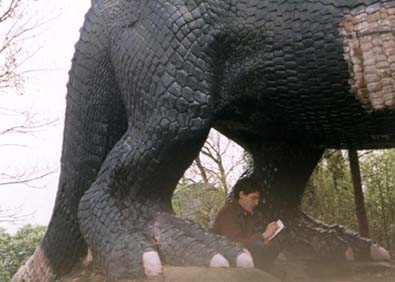 Brian Selznick (pictured, right, drawing underneath an iguanodon in Sydenham, England) seems to have been born to write and illustrate children's books, yet he made a brave attempt at avoiding his destiny by studying theatre and set design.
Brian Selznick (pictured, right, drawing underneath an iguanodon in Sydenham, England) seems to have been born to write and illustrate children's books, yet he made a brave attempt at avoiding his destiny by studying theatre and set design.
But he could not long resist the lure of the bright colors, the great authors, and the chance to illustrate all those wonderful stories.
We talked to him about his monster makeup and monster movies, which are both somewhat connected to his latest book, The Boy of a Thousand Faces.
BookSense.com: Are you a big monster movie fan?
 Brian Selznick: Yes, it started when I was a kid. The whole idea for The Boy of a Thousand Faces sort of sprang from memories of when I was young and was obsessed with monster movies myself. I used to love Lon Chaney, and "The Phantom of the Opera" was my favorite movie. I remember watching it with my next-door neighbor in my parent's bedroom and hiding behind the bed when the scary parts came and screaming . . .
Brian Selznick: Yes, it started when I was a kid. The whole idea for The Boy of a Thousand Faces sort of sprang from memories of when I was young and was obsessed with monster movies myself. I used to love Lon Chaney, and "The Phantom of the Opera" was my favorite movie. I remember watching it with my next-door neighbor in my parent's bedroom and hiding behind the bed when the scary parts came and screaming . . .
Was the Phantom of the Opera your favorite monster "hero"?
Yes, of all the monsters, that was definitely my favorite. Although I loved Frankenstein and The Werewolf, you know, and any giant insect movie from the 1950s. I also loved "Them," "The Incredible Shrinking Man," and those sorts of films.
And I did try to do monster makeup on myself. I had some books about how to do monster makeup out of household products -- and I recently found some copies of the actual books I had when I was 10 -- and I would make myself into Frankenstein out of the bottom of a paper lunch bag and do all sorts of makeup. I bought spirit gum for gluing fake noses on myself. I had this toy called Hugo, The Man of a Thousand Faces. It was this bald doll, which came with all sorts of prosthetic facial features that you could glue onto him. And you could also glue them on yourself. I would do that a lot, too.
Do you dress up for Halloween?
Not enough! I always want to dress up more. I did dress up this year and marched in the [New York City] Halloween Parade with a friend who made some giant puppets with kids. That was really fun -- it's something I want to do every year.
Were you holding a puppet?
I was holding this giant tinfoil dragon puppet and I had dressed up. I had gotten a turn-of-the-century costume together for another book I'm illustrating, and I put together an outfit for this character. But the real focus was the big tin-foil dragon.
You've illustrated a lot of books and done a lot of covers. Which collaborations were most enjoyable?
I've been really lucky. I've worked with really great people. The first collaboration I did was with Pam Conrad, on a book called Doll Face Has a Party, which is now out of print.
 I started off as a children's bookseller at Eeyore's Books for Children, which was on Manhattan's Upper West Side. Unfortunately it's now closed. It was one of the oldest children's bookstores in the country -- at the time I think it was about 25 or 30 years old, a very influential place. One of my favorite authors to handsell was Pam Conrad. I love My Daniel and The Tub People's Christmas, and her ghost story, Stonewords, which is so beautiful and scary.
I started off as a children's bookseller at Eeyore's Books for Children, which was on Manhattan's Upper West Side. Unfortunately it's now closed. It was one of the oldest children's bookstores in the country -- at the time I think it was about 25 or 30 years old, a very influential place. One of my favorite authors to handsell was Pam Conrad. I love My Daniel and The Tub People's Christmas, and her ghost story, Stonewords, which is so beautiful and scary.
While I was there, I met an editor named Laura Geringer who had been one of my regular customers for about a year before I knew who she was. My first book came out while I was still at the store. I showed it to her and she said, "This is really nice. I'm an editor and I'd like to work with you." So I went to her office and one of the stories she offered me to illustrate was Doll Face Has a Party. It's this really weird story about this doll who throws herself a party and goes off looking for music and dancing and sweetcakes for the event. I was just so excited to work with Pam Conrad.
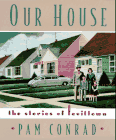 I got all these ideas about the story. Doll Face sounded like this big Broadway star. I found an old doll at a flea market and gave her this 1960s pink bouffant hairdo with spitcurls. When I finally met Pam she told me that she had originally thought of the books as this quiet little story. She had these little Japanese dolls when she was a girl and she was picturing Doll Face as this very quiet little doll. She said, "Brian, you've made it Broadway!" But she loved it. So that was very exciting. We went on to do another book together that was very different, called House, the Stories of Levittown. She took me to Levittown and took me on a tour of the different areas, the houses. We went to the library there and saw old photographs.
I got all these ideas about the story. Doll Face sounded like this big Broadway star. I found an old doll at a flea market and gave her this 1960s pink bouffant hairdo with spitcurls. When I finally met Pam she told me that she had originally thought of the books as this quiet little story. She had these little Japanese dolls when she was a girl and she was picturing Doll Face as this very quiet little doll. She said, "Brian, you've made it Broadway!" But she loved it. So that was very exciting. We went on to do another book together that was very different, called House, the Stories of Levittown. She took me to Levittown and took me on a tour of the different areas, the houses. We went to the library there and saw old photographs.
I've just been lucky that I've been offered these really great interesting stories with a lot of historical things I wouldn't have known, or stories I would never have heard. It's exciting to get a phone call from an editor who says, "I've got this story I'd like you to look at."
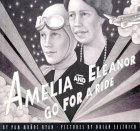 I did a book called Amelia and Eleanor Go For a Ride with Pam Munoz Ryan and she was really, really wonderful to work with. We had done a book called Riding Freedom. When we were working on Amelia and Eleanor Go For a Ride I ended up moving to Washington, D.C. for six months to do research -- she had already done a ton! I did research at the Air and Space Museum and various libraries and I drew the whole book while I was there. A little cousin of mine I was going to visit was doing a report at her elementary school on Eleanor Roosevelt so I brought her a lot of my research -- a lot of the pictures I had found. My uncle was there while I was showing my little cousin the research. There was a picture of Eleanor Roosevelt with the opera singer Marian Anderson. My uncle looked at the photograph and said, "I knew both of those women." I said, "Really?" When Marian Anderson was not allowed to sing in Washington, D.C. opera houses because she was black Eleanor Roosevelt took her around to protest. [Marian Anderson] ended up having a big concert at the Lincoln Memorial -- my uncle was apparently one of the students who helped organize some of these protests. I was really amazed and I called Pam when I got home to tell her the story. A few days later she called back and said, "Brian, are you planning to write about this?" I said, "I don't think so." She said, "I'd really like to." And so now hopefully that's something we're going to collaborate on. It's always fun to meet authors and work with them.
I did a book called Amelia and Eleanor Go For a Ride with Pam Munoz Ryan and she was really, really wonderful to work with. We had done a book called Riding Freedom. When we were working on Amelia and Eleanor Go For a Ride I ended up moving to Washington, D.C. for six months to do research -- she had already done a ton! I did research at the Air and Space Museum and various libraries and I drew the whole book while I was there. A little cousin of mine I was going to visit was doing a report at her elementary school on Eleanor Roosevelt so I brought her a lot of my research -- a lot of the pictures I had found. My uncle was there while I was showing my little cousin the research. There was a picture of Eleanor Roosevelt with the opera singer Marian Anderson. My uncle looked at the photograph and said, "I knew both of those women." I said, "Really?" When Marian Anderson was not allowed to sing in Washington, D.C. opera houses because she was black Eleanor Roosevelt took her around to protest. [Marian Anderson] ended up having a big concert at the Lincoln Memorial -- my uncle was apparently one of the students who helped organize some of these protests. I was really amazed and I called Pam when I got home to tell her the story. A few days later she called back and said, "Brian, are you planning to write about this?" I said, "I don't think so." She said, "I'd really like to." And so now hopefully that's something we're going to collaborate on. It's always fun to meet authors and work with them.
How much freedom are you given when you are illustrating?
 It feels like a pretty complete freedom. But that's also with the understanding that it's going to be a completely collaborative process. When I get a manuscript I read it, then start to imagine how I want to lay the book out and what I want it to feel like. I think about the whole book as an object, what the books should feel like, the covers, and the endpapers. I start with little thumbnail sketches. Then, once I feel I have something I can present, I bring that to the editor and from there it's really wonderfully collaborative. From what I've done, the editor and the art director will say, "Maybe this will work better, this is great, go further in this direction." I never work directly with the author, per se. But I know at some point in this process the author is shown what I'm doing and I always hope that the author likes what I've done. Because sometimes it might not be what they thought of first, like what happened with Pam Conrad. I think I've been lucky; [the authors] have liked what I've done. Very often they will have input they tell the editor. It sort of all comes together.
It feels like a pretty complete freedom. But that's also with the understanding that it's going to be a completely collaborative process. When I get a manuscript I read it, then start to imagine how I want to lay the book out and what I want it to feel like. I think about the whole book as an object, what the books should feel like, the covers, and the endpapers. I start with little thumbnail sketches. Then, once I feel I have something I can present, I bring that to the editor and from there it's really wonderfully collaborative. From what I've done, the editor and the art director will say, "Maybe this will work better, this is great, go further in this direction." I never work directly with the author, per se. But I know at some point in this process the author is shown what I'm doing and I always hope that the author likes what I've done. Because sometimes it might not be what they thought of first, like what happened with Pam Conrad. I think I've been lucky; [the authors] have liked what I've done. Very often they will have input they tell the editor. It sort of all comes together.
How did you first become an illustrator?
I'd always drawn; I always made things ever since I was really little. I went to the Rhode Island School of Design (RISD) and I think in high school people used to say, "Oh Brian! You should be a children's book illustrator, that's perfect for you." So I kind of rebelled against it when I was in college. Chris Van Allsburg and David MacAulay taught at this school, and I never took any of their classes. Maurice Sendak came to speak and I very pointedly didn't go and hear him. I was really into theatre and studied it at Brown University, which is right next door to RISD. Luckily, I did not get into the graduate school I wanted to go to for set design -- I thought maybe this was a sign. So I took some time off and traveled, and I kept notebooks and I drew and I wrote stories. When I got back, I realized I loved drawing most of all, and children's books are the best things for me.
I've always loved children's books -- it's not that I didn't like them, I just didn't think I wanted to do that. But then I suddenly realized I did -- and I had graduated from college with a portfolio that was mostly naked people from my figure-drawing classes . . . which I didn't think was really going to help me get a job as a children's book illustrator.
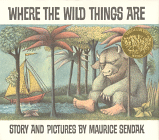
I got a job at Eeyore's Books for Children, and that was really my entire education in children's books. My manager at the time was Steve Geck, who is now an editor at Simon and Schuster. He was really my mentor. I sort of charmed my way into the job -- you were supposed to have a good working knowledge of children's books and I knew nothing beyond Dr. Seuss and Where the Wild Things Are. Steve would send me home with bags full of books and I would read chapter books and 15 to 20 picture books a night. Steve had really incredible taste and insights into children's books -- he was a big influence on me. When I felt I was ready, I started working on my own book, The Houdini Box, which was based on a project I had done at RISD. It wasn't a children's book originally, it was more of a sculptural project that had a story attached. I rewrote that story and the first person I wanted to show it to was Steve. He really liked it and said, "You know, my girlfriend works for Random House. Would you like me to show it to her?" So Anne Schwartz at Random House called me up and said that she wanted to publish it.
The Houdini Box came out when I was still working at Eeyore's. That was great, to be a bookseller and have a book that you wrote! All these unsuspecting customers would come in and say they were looking for a book for a ten-year-old and I would say, "I happen to have this really great book."
The Houdini Box did really well -- it won a few awards and it was in print for about five or six years. A few years ago it went out of print and I was really devastated. Anne Schwartz, now has an imprint at Simon and Schuster and is reprinting The Houdini Box in September. I did a new cover for it and it's the tenth anniversary, which is weird!
Who are your influences when it comes to writing and illustration?
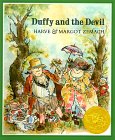
My first influences were a few teachers I had at the RISD, who helped me to see things in a new way and to try to express things in my drawing that I hadn't done before. Once I started working at Eeyore's I really got to know the work of Maurice Sendak and Arnold Lobel and Margo Zemach -- who's really incredible. She won a Caldecott Medal for some Jewish folktales she illustrated (Duffy and the Devil -- 1974). She has this really beautifully spirited style. It's sort of loose, yet detailed and energetic and gorgeous. She got Caldecott Honors for a book called The Judge, (1970) which is really great, and a book called It Could Always Be Worse (1978).
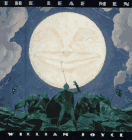 I saw books by Richard Egielski and Arthur Yorinks like Louis the Fish and Oh Brother and Bravo Minsky for the first time. I loved William Joyce's The Leaf Men a lot. I think it is very much like what I love to do. The whole dark, mysterious fantastical world that he creates and the beautiful story he's able to tell in just the length of a picture book, I think is gorgeous. I thought it should have gotten a Caldecott. I also saw Peter Sis' work for the first time.
I saw books by Richard Egielski and Arthur Yorinks like Louis the Fish and Oh Brother and Bravo Minsky for the first time. I loved William Joyce's The Leaf Men a lot. I think it is very much like what I love to do. The whole dark, mysterious fantastical world that he creates and the beautiful story he's able to tell in just the length of a picture book, I think is gorgeous. I thought it should have gotten a Caldecott. I also saw Peter Sis' work for the first time.
When I was at Eeyore's I painted the windows for all the different holidays. When we had authors coming to the store for readings, I would do displays on the window for their books. The first was Anthony Browne. He was going to read from his book, Gorilla. So I painted this giant nine-foot gorilla directly on the glass. I found myself painting in all these people's styles. I did a big window display for [Peter Sis'] book on Columbus. I had to paint backward on the inside of the glass to be seen clearly from the outside. They had to be bold enough to be read from across the street to bring people's attention in. That became a big influence on my work - I'm always thinking, even though it's obviously not ten feet tall, what will make the boldest, cleanest, clearest image. Especially for book covers where there is a sense of wanting to catch someone's eye from across a bookstore. I think about those windows and think, "How would this look nine feet tall? Would this catch someone's attention? Is there a clearer, cleaner way of getting this point across? Is it bold?" So I'm always thinking about those windows at Eeyore's.
You don't work in a bookstore anymore, do you?
No -- I left Eeyore's in 1991 or 1992. The Houdini Box was published in 1991, so I went part-time for a little while, and finally went freelance and I've just been working at home.
How long have you lived in Brooklyn? What do you enjoy most about it?
 Brooklyn's great. I moved to Brooklyn about two and a half years ago. I was on Manhattan's Upper West Side in a tiny apartment -- but it was very cozy, stuffed with all my things, shelves all around and things hanging from my ceiling and my desk in one corner and my book in the other and Central Park was three blocks away. I thought, "I can't really live anywhere else because this has everything." But I felt I needed some more space. I came to Carroll Gardens, which is this wonderful old Italian neighborhood. It feels really safe. I feel like on the Upper West Side there's an energy that never lets you go. Which is great on one hand, it's this huge throbbing energy with all these thousands of people on the sidewalk and babies in strollers and people on cell phones and everything. But here you can breathe. You step out of the subway and it's quieter. I live right by a great independent bookstore called Court Street Books. There are all these great restaurants on Smith Street, which is this hot place to have a restaurant now. The only thing I miss is Central Park because I really used to love riding my bike there.
Brooklyn's great. I moved to Brooklyn about two and a half years ago. I was on Manhattan's Upper West Side in a tiny apartment -- but it was very cozy, stuffed with all my things, shelves all around and things hanging from my ceiling and my desk in one corner and my book in the other and Central Park was three blocks away. I thought, "I can't really live anywhere else because this has everything." But I felt I needed some more space. I came to Carroll Gardens, which is this wonderful old Italian neighborhood. It feels really safe. I feel like on the Upper West Side there's an energy that never lets you go. Which is great on one hand, it's this huge throbbing energy with all these thousands of people on the sidewalk and babies in strollers and people on cell phones and everything. But here you can breathe. You step out of the subway and it's quieter. I live right by a great independent bookstore called Court Street Books. There are all these great restaurants on Smith Street, which is this hot place to have a restaurant now. The only thing I miss is Central Park because I really used to love riding my bike there.
What is your favorite bookshop?
Wow! I miss Eeyore's very much; I think that was one of the best. I have to say it's always nice to go into Books of Wonder (1) in New York City and see what they have. There's a really nice little bookstore in Washington D.C. called Fairy Godmother (2) where Roberta Blanchard is the owner. It's a really great place that a lot of kids go to. Also, Jewel Stoddard, who used to own the Cheshire Cat in Washington D.C., now runs the children's section at Politics and Prose (3) and that's really wonderful.
In Pennsylvania there's a wonderful bookstore called Children's Book World (4). That's run by Hannah Schwartz, who's been really supportive. I've known her for a long time. It's always a treat to go there. I did a signing at Chris' Corner Books (5) (owned by Chris Saad) in Philadelphia recently. I had worked with one of the booksellers at Eeyore. They were all wonderful and enthusiastic and knowledgeable and had a lovely bookstore complete with quotes painted on the walls from (Beverly Cleary's) Ramona and (Lois Lowry's) Anastasia Krupnick.
 I just went to a tenth anniversary party for an independent bookstore called Aladdin's Lamp (6) in Virginia run by Alina Gawlik. I did a reading and I saw how wonderful the store is and what a community place it is. I met Alina about ten years ago when ALA (now Book Expo America) was in New York City. They had an event where booksellers went to author's houses. Since The Houdini Box had just come out I somehow got on this list. But I thought my apartment was too small to have people over. So, I had just met Paula Danziger at Eeyore's Books for Children so I called and asked if I could use her apartment. She said, "Brian, the whole point of the event is so people can see the author's apartment. You can't have it in my house!" She convinced me to have it in my house and I had about ten or eleven booksellers over. I passed around some original art from The Houdini Box and then the doorbell rang and Paula showed up and surprised everybody. Of course everyone almost fell out of their chairs.
I just went to a tenth anniversary party for an independent bookstore called Aladdin's Lamp (6) in Virginia run by Alina Gawlik. I did a reading and I saw how wonderful the store is and what a community place it is. I met Alina about ten years ago when ALA (now Book Expo America) was in New York City. They had an event where booksellers went to author's houses. Since The Houdini Box had just come out I somehow got on this list. But I thought my apartment was too small to have people over. So, I had just met Paula Danziger at Eeyore's Books for Children so I called and asked if I could use her apartment. She said, "Brian, the whole point of the event is so people can see the author's apartment. You can't have it in my house!" She convinced me to have it in my house and I had about ten or eleven booksellers over. I passed around some original art from The Houdini Box and then the doorbell rang and Paula showed up and surprised everybody. Of course everyone almost fell out of their chairs.
What are you working on now?
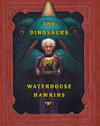 I just finished [illustrating] a book called The Dinosaurs of Waterhouse Hawkins, by Barbara Kerley. It's about a man in 1853 who built the first life-size sculptures of dinosaurs before anyone had even heard the word dinosaur! So he really introduced dinosaurs to the world. They still stand in London -- I got to go see them and photograph and climb on them. Now I'm illustrating a book by Rosemary Wells that should be out in year and a half. I'll be doing another book by Pam Munoz Ryan about Marian Anderson. Which I'm hopefully going to be starting work on in February or March. There are a few other things on the burner, too.
I just finished [illustrating] a book called The Dinosaurs of Waterhouse Hawkins, by Barbara Kerley. It's about a man in 1853 who built the first life-size sculptures of dinosaurs before anyone had even heard the word dinosaur! So he really introduced dinosaurs to the world. They still stand in London -- I got to go see them and photograph and climb on them. Now I'm illustrating a book by Rosemary Wells that should be out in year and a half. I'll be doing another book by Pam Munoz Ryan about Marian Anderson. Which I'm hopefully going to be starting work on in February or March. There are a few other things on the burner, too.
Do you have any advice to children on monster makeup?
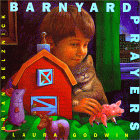 [Laughs] There are some good books about how to do monster makeup that are still in print for kids. There are lots of places you can get greasepaint and things like that if you want. If your mom uses makeup there's a lot of stuff there that you could use. There's stuff you can find around the house -- of course you have to make sure it's not going to be harmful in any way! If you love monsters and monster movies just let your imagination go! See what you can do. I used to tape up my nose with Scotch tape and try to make my face look all weird by pulling the tape in different directions. There's a lot you can do with Scotch tape. I would recommend that. And Elmer's Glue does come off with water. I don't know if I would necessarily glue things to my face with Elmer's Glue -- but if you live near a costume shop there's something you can get called Spirit Gum, which you can get to glue fake hair to your face. I would say start by going to the library or a bookstore and asking about what kind of books you might be able to find on the subject.
[Laughs] There are some good books about how to do monster makeup that are still in print for kids. There are lots of places you can get greasepaint and things like that if you want. If your mom uses makeup there's a lot of stuff there that you could use. There's stuff you can find around the house -- of course you have to make sure it's not going to be harmful in any way! If you love monsters and monster movies just let your imagination go! See what you can do. I used to tape up my nose with Scotch tape and try to make my face look all weird by pulling the tape in different directions. There's a lot you can do with Scotch tape. I would recommend that. And Elmer's Glue does come off with water. I don't know if I would necessarily glue things to my face with Elmer's Glue -- but if you live near a costume shop there's something you can get called Spirit Gum, which you can get to glue fake hair to your face. I would say start by going to the library or a bookstore and asking about what kind of books you might be able to find on the subject.
Face Painting (Kids Can Do It), Patricia Silver, Louise Phillips (Illustrator)
Snazaroo Zoo: Great Faces and Easy Costumes to Bring Out the Animal in You, Janis Bullis
Wigs and Make-Up for Theatre, Television and Film, Patsy Baker
(1) Books of Wonder, 16 W. 18th St., New York, NY 10011, (212) 989-3270
(2) Fairy Godmother, 319 Seventh Street, SE, Washington, D.C., 202-547-5474
(3) Politics and Prose Books & Coffee, 5015 Connecticut Avenue NW, Washington, D.C. (202)364-1919 books@politics-prose.com
(4) Children's Book World, 17 Haverford Station Rd, Haverford, PA (610)642-6274 Fax: (610)642-8647
(5) Chris' Corner Books, 1940 Pine St, Philadelphia, PA 10103
(6) Aladdin's Lamp, 126 West Broad Street, Falls Church, VA (703)241-8281
Author photograph is a self-portrait.
